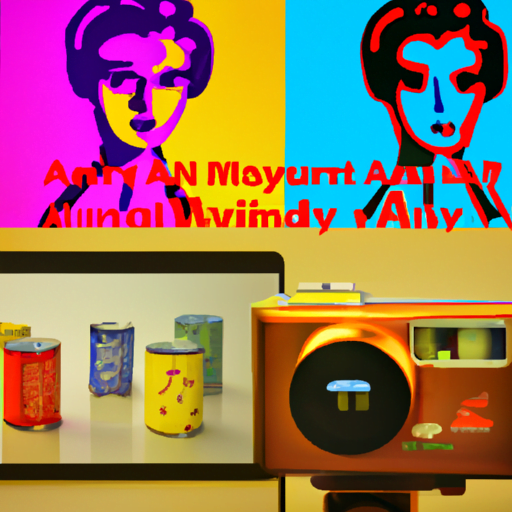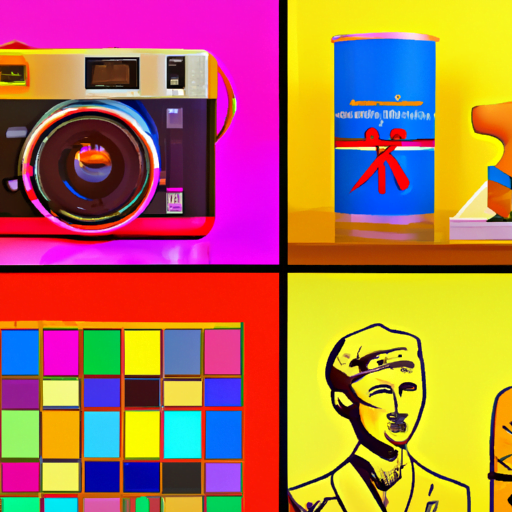
-
Table of Contents
- The Marriage of Analog and Digital: Handmade Art in the Digital Age
- The Rise of Digital Art
- The Value of Handmade Art
- The Fusion of Analog and Digital
- Case Studies: Artists Embracing the Analog-Digital Marriage
- 1. David Hockney
- 2. Heather Hansen
- 3. TeamLab
- The Benefits and Challenges
- Benefits:
- Challenges:
- Summary
The Marriage of Analog and Digital: Handmade Art in the Digital Age

In today’s digital age, where technology dominates almost every aspect of our lives, it may seem that handmade art is becoming a thing of the past. However, the marriage of analog and digital has created a unique and exciting space for artists to explore and create. This article will delve into the relationship between analog and digital art, the benefits and challenges it presents, and how artists are embracing this fusion to create stunning works of art.
The Rise of Digital Art
Digital art has experienced a significant rise in popularity over the past few decades. With the advent of powerful computers, sophisticated software, and high-resolution displays, artists have been able to explore new creative possibilities. Digital art encompasses a wide range of mediums, including digital painting, 3D modeling, animation, and interactive installations.
One of the key advantages of digital art is its accessibility. Unlike traditional art forms that require physical materials and specialized skills, digital art can be created with just a computer and software. This accessibility has democratized the art world, allowing artists from diverse backgrounds to express themselves and share their work with a global audience.
Furthermore, digital art offers unparalleled flexibility and versatility. Artists can easily experiment with different styles, colors, and compositions without the fear of making irreversible mistakes. The ability to undo and redo actions, adjust layers, and apply various effects empowers artists to push their creative boundaries and explore new artistic territories.
The Value of Handmade Art
While digital art has its merits, there is still immense value in handmade art. Handmade art refers to art created using traditional techniques and physical materials, such as painting, drawing, sculpture, and printmaking. These art forms have a rich history and cultural significance, often embodying the artist’s personal touch and unique craftsmanship.
Handmade art offers a tangible and tactile experience that digital art cannot replicate. The texture of brushstrokes, the weight of a sculpture, and the smell of oil paint all contribute to the sensory experience of handmade art. This physicality creates a deeper connection between the artwork and the viewer, evoking emotions and sparking conversations.
Additionally, handmade art often requires a high level of skill and craftsmanship. Artists spend years honing their techniques and mastering their chosen medium. This dedication and expertise are evident in the final artwork, which can be awe-inspiring and captivating.
The Fusion of Analog and Digital
Instead of pitting analog and digital art against each other, many artists are embracing the fusion of these two worlds. By combining traditional techniques with digital tools, artists can create unique and innovative artworks that bridge the gap between the physical and digital realms.
One example of this fusion is the use of digital tools in the creation of traditional art. Artists can use digital software to sketch, plan compositions, and experiment with color palettes before transferring their ideas onto canvas or paper. This allows for greater precision and efficiency in the creative process, while still preserving the handmade quality of the final artwork.
Conversely, digital art can also incorporate elements of handmade art. Artists can digitally manipulate scanned textures, hand-drawn elements, or photographs of physical objects to add depth and authenticity to their digital creations. This blending of analog and digital elements creates a unique visual language that resonates with viewers.
Case Studies: Artists Embracing the Analog-Digital Marriage
Several artists have embraced the marriage of analog and digital art, pushing the boundaries of creativity and challenging traditional notions of art. Let’s explore a few case studies:
1. David Hockney
David Hockney, a renowned British artist, has been at the forefront of exploring the intersection of analog and digital art. He combines traditional painting techniques with digital tools, such as the iPad, to create vibrant and captivating artworks. Hockney’s iPad paintings have gained widespread recognition and have been exhibited in prestigious galleries around the world.
2. Heather Hansen
Heather Hansen, a contemporary American artist, merges performance art with drawing to create mesmerizing and ephemeral artworks. She uses her body as a tool, using charcoal to create intricate and expressive marks on large sheets of paper. Hansen then photographs her movements and digitally enhances the images, adding layers of color and texture. The result is a stunning fusion of analog and digital art forms.
3. TeamLab
TeamLab, a Japanese interdisciplinary art collective, creates immersive and interactive installations that blur the boundaries between the physical and digital worlds. Their artworks often incorporate traditional Japanese art techniques, such as calligraphy and ink painting, alongside cutting-edge digital technology. Through the fusion of analog and digital elements, TeamLab creates immersive environments that engage and captivate viewers.
The Benefits and Challenges
The marriage of analog and digital art presents both benefits and challenges for artists. Let’s explore some of them:
Benefits:
- Expanded creative possibilities: The fusion of analog and digital art opens up new avenues for experimentation and exploration.
- Efficiency and precision: Digital tools can streamline the creative process, allowing artists to work more efficiently and make precise adjustments.
- Accessibility: The marriage of analog and digital art makes art more accessible to a wider audience, breaking down barriers and fostering inclusivity.
- Collaboration: Digital platforms enable artists to collaborate remotely, transcending geographical boundaries and fostering a global artistic community.
Challenges:
- Technical learning curve: Artists need to invest time and effort in learning digital tools and techniques, which can be daunting for those accustomed to traditional art forms.
- Authenticity concerns: Some viewers may question the authenticity and value of digitally enhanced or manipulated artworks, raising questions about the role of the artist’s hand in the creative process.
- Preservation and longevity: Digital artworks face challenges in terms of preservation and longevity, as technology rapidly evolves and file formats become obsolete.
- Digital divide: Not all artists have access to the necessary technology and resources to explore the marriage of analog and digital art, creating a digital divide within the art world.
Summary
The marriage of analog and digital art has created a dynamic and exciting space for artists to explore and create. While digital art offers accessibility and versatility, handmade art provides a tangible and tactile experience. By embracing the fusion of analog and digital, artists can push the boundaries of creativity and create unique artworks that bridge the gap between the physical and digital realms.
Through case studies of artists like David Hockney, Heather Hansen, and TeamLab, we have seen how the marriage of analog and digital art can result in stunning and captivating artworks. However, this fusion also presents challenges, such as the technical learning curve and concerns about authenticity and preservation.
